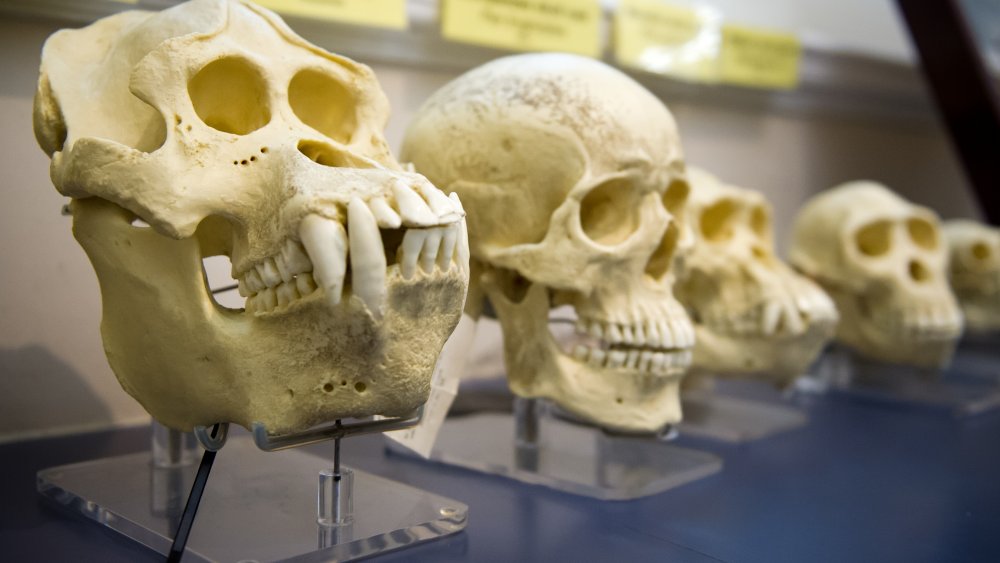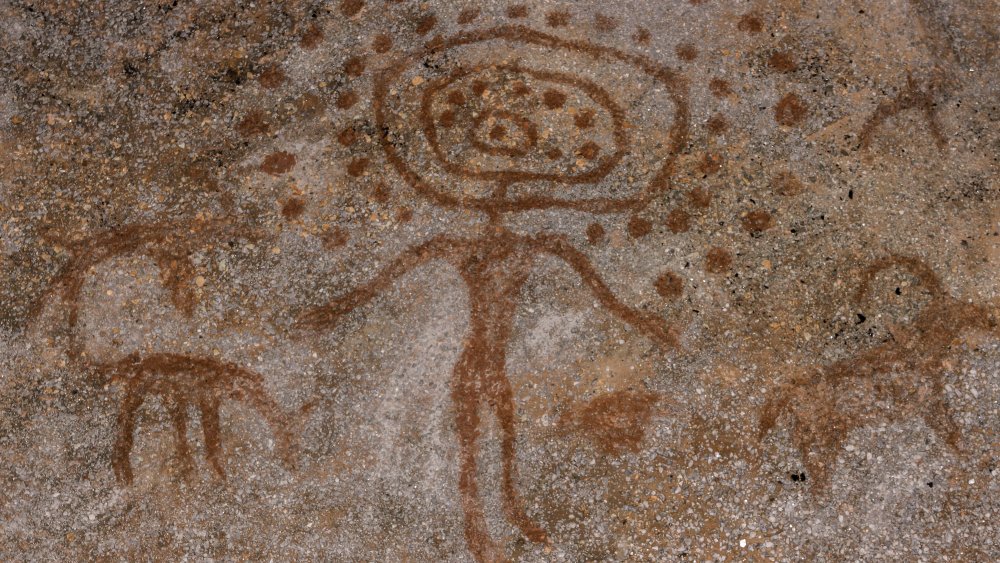The Truth About The Homo Sapiens Subspecies That Went Extinct
Many human species and subspecies have risen on the branches of our evolutionary family tree, only to be lost again in the sands of time. Sometimes literally sand and dirt, where these early prototype humans were encased for thousands and millions of years. From our divergence with the apes, we've seen a slew of hominids evolve in Africa. Eventually, some of those hominids became early humans, and some of those decided to leave the continent for more unknown territories. Which would be great for them, except most of those offshoots ended up extinct.
Human history is old — there has been a multitude of human species — and the newly discovered subspecies, Homo sapiens idaltu, dates back nearly as far as Homo sapiens themselves. Our oldest Homo sapiens fossils date back to nearly 200,000 years ago, while the Homo sapiens idaltu fossils date to at least 160,000 years ago, according to the University of California at Berkeley. Like the Neanderthal, we don't see any idaltu (also known as the "Herto Man") walking around today. Extinction can be a real pain.
They might not be extinct at all
There's controversy among paleoanthropologists over whether or not Homo sapiens idaltu is even a subspecies. Some believe the fossils found in 1993 are distinctly different enough from Homo sapien to be considered a subspecies. As the Global Biodiversity Information Facility reports, others maintain that Herto Man is the most probable direct ancestor of modern humans. We're not talking "aunt and uncle" here. Idatlu could very well be the grandfather of our current subspecies, Homo sapiens sapiens.
The Herto Man has many features that resemble modern humans and several that were only present in earlier ancestors. They had large, robust skulls, a trait similar to many earlier hominids. For example, the idaltu skull is similar to those of Paranthropus robustus, Australopithecus boisei, and Homo rhodesiensis, in that it was thicker and, frankly, huge in comparison to modern humans, as Michigan State University tells us. But the faces of Homo sapiens idaltu weren't much different from our own. Because this subspecies of our ancestors has a sufficient mix of older hominid features combined with modern human features to be considered Homo sapien, they provide a much needed missing link to the past. As UC Berkeley says, it gives us a potential piece of our evolutionary tree that we didn't know existed before a few decades ago. The Herto Man might not have gone extinct, but instead lives on in all of us.

